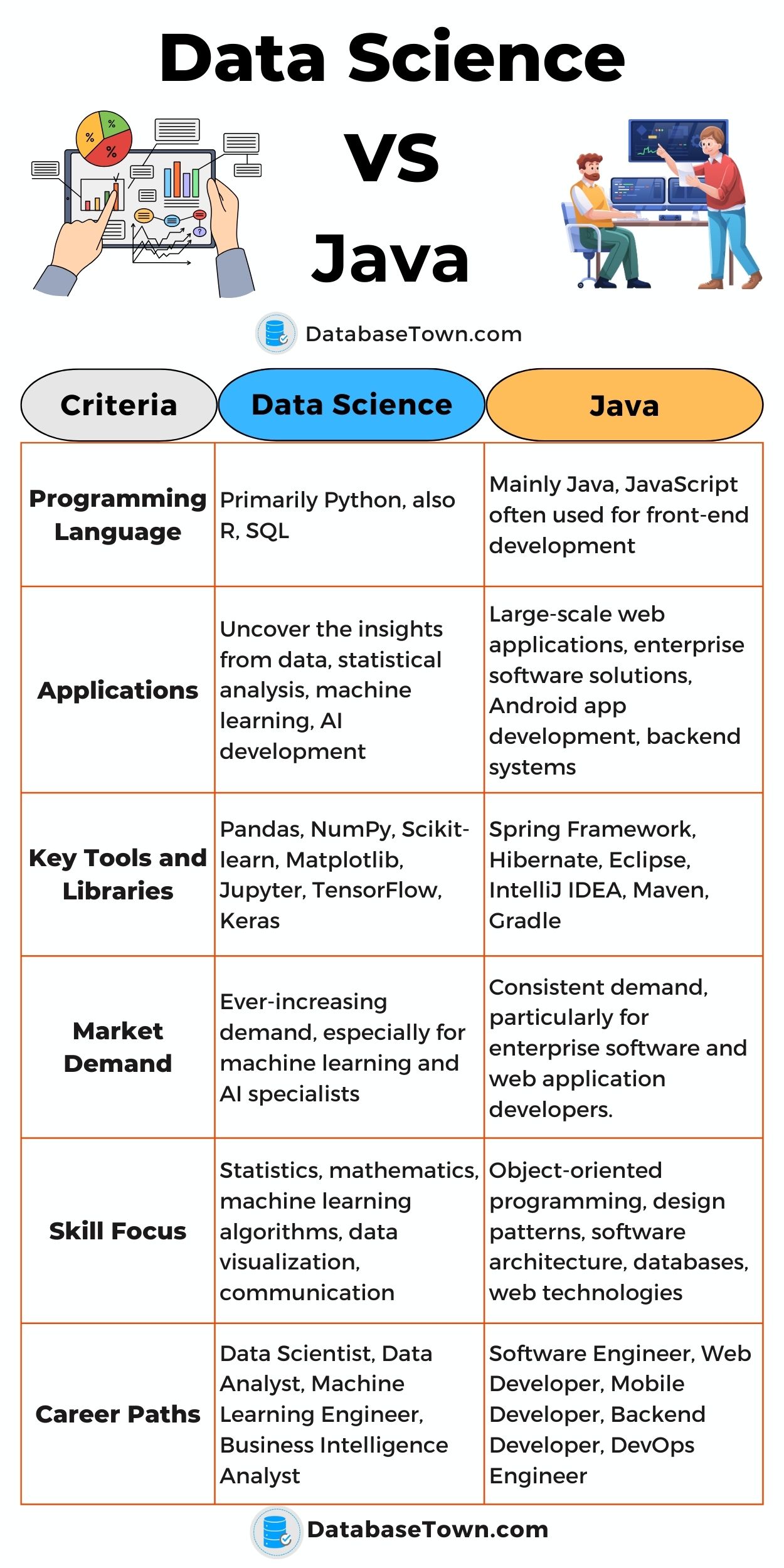
Difference between data science and java
Choosing a career path can be tough, especially when you’re considering two hot fields like data science and java development. In this article, we’ll compare what each one is about, the career paths they offer, and how the skills are used.
Data science analyzes the huge datasets to extract useful information used in making decision, whereas Java is a tool to create software solutions, including those used in data science. These fields often collaborate for powerful results.
Data Science VS Java
Here is a table showing key differences between data science and java.
| Aspect | Data Science | Java |
|---|---|---|
| Programming Language | Primarily Python, also R, SQL | Mainly Java, JavaScript often used for front-end development |
| Applications | Uncover the insights from data, statistical analysis, machine learning, AI development | Large-scale web applications, enterprise software solutions, Android app development, backend systems |
| Key Tools and Libraries | Pandas, NumPy, Scikit-learn, Matplotlib, Jupyter, TensorFlow, Keras | Spring Framework, Hibernate, Eclipse, IntelliJ IDEA, Maven, Gradle |
| Market Demand | Ever-increasing demand, especially for machine learning and AI specialists | Consistent demand, particularly for enterprise software and web application developers. |
| Skill Focus | Statistics, mathematics, machine learning algorithms, data visualization, communication | Object-oriented programming, design patterns, software architecture, databases, web technologies |
| Career Paths | Data Scientist, Data Analyst, Machine Learning Engineer, Business Intelligence Analyst | Software Engineer, Web Developer, Mobile Developer, Backend Developer, DevOps Engineer |
Data Science
Data science is a burgeoning field that revolves around extracting meaningful information from huge amount of data. Data scientists use different tools to study data. This helps them to find patterns and make better decisions. This field is getting a lot of attention because it can influence business strategies and improve business operations.
Data science includes fields like machine learning, visualization, and statistics to turn data into knowledge. Data scientists use these skills to build models, predict trends, and suggest action plans.
Python is one of the most popular skillset of the data scientists. Python’s simple syntax and rich libraries make it a popular language for data science.
Advantages of Python in Data Science:
- Simplicity: Python’s clean and straightforward syntax facilitates robust code development.
- Extensive Libraries: Python offers a wealth of libraries like Pandas, NumPy, and Matplotlib, which expedite data analysis and visualization.
Java
Java, a versatile and robust programming language, is widely recognized for its potential to develope large-scale web applications and robust enterprise solutions.
Java is a popular choice in the tech industry because it has a long history in web development and plays nicely with various platforms.
In data science, Java provides a whole toolbox for handling information. You can process data, analyze it with statistics, and even use it to develop machine learning models that solve real-world business problems. Further, Java’s super fast when dealing with massive datasets. This quality makes it a great choice for data scientists working with a lot of information
Advantages of Java in Data Science:
- Speed: Java’s high execution speed makes it ideal for managing and processing large volumes of data.
- Machine Learning: Java provides various methods for machine learning and statistical analysis which makes it essential for various data science applications.







